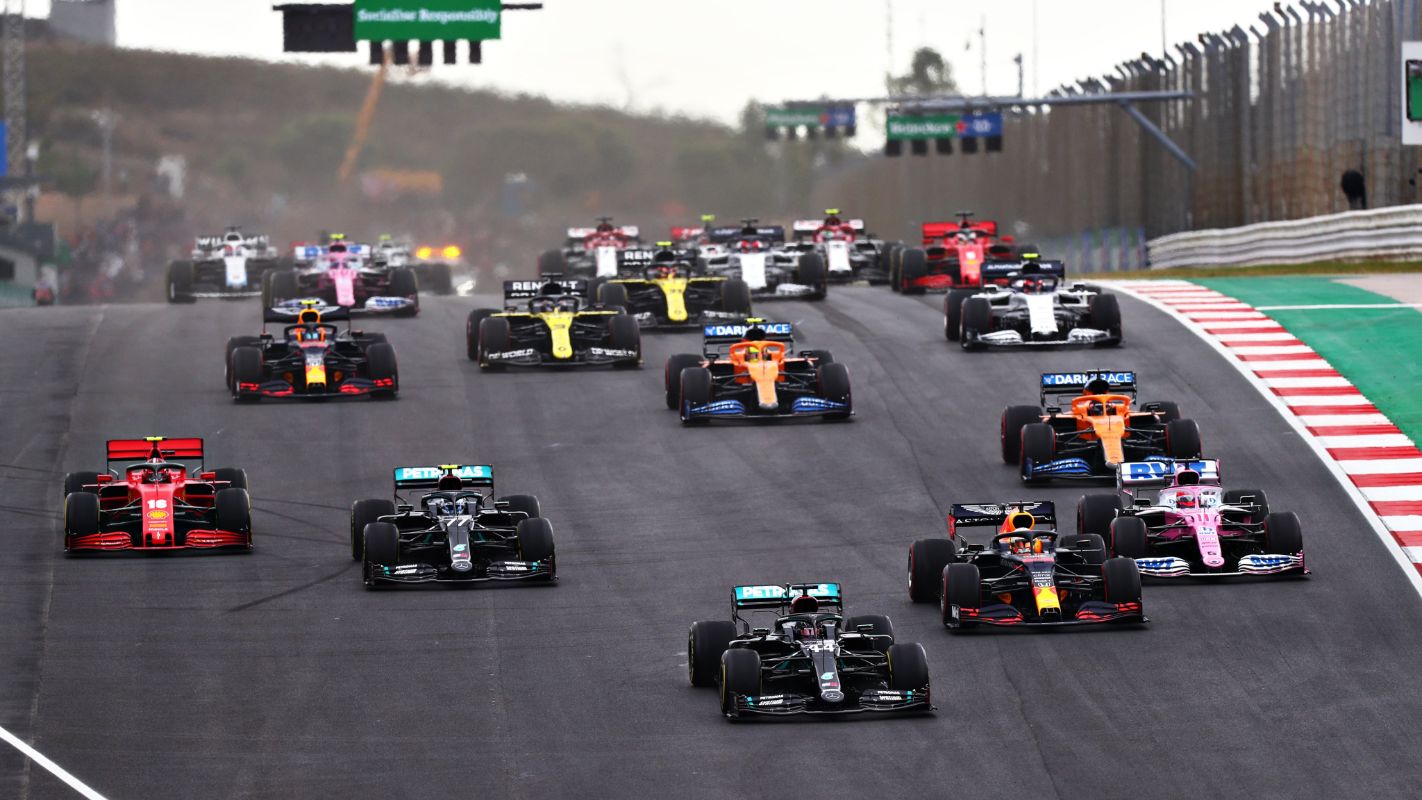In the annals of motorsport, certain machines transcend their mechanical nature to become legends. The McLaren MP4/4, the Ferrari F2004, the Mercedes W11—these are cars that defined an era, synonymous with a level of dominance that left rivals breathless and fans in awe. In 2023, another name was etched onto that prestigious list: the Red Bull RB19. On paper, its record is not just impressive; it is statistical perfection, the most dominant car in the sixty-four-year history of Formula 1. With Max Verstappen at the helm, the RB19 claimed victory in an astonishing 21 out of 22 races, a feat of engineering supremacy that may never be repeated.

Yet, as the roar of its engine fades into the history books, a persistent and unsettling question remains, casting a shadow over its gleaming legacy. Was the RB19’s phenomenal success purely the product of design genius, a flawless execution of aerodynamic principles? Or did it harbor secrets—clever interpretations of the regulations that danced on the very edge of legality, and perhaps, even crossed the line? Unlike the celebrated champions of the past, the RB19 is followed by an asterisk, a whisper of controversy that suggests its perfection may have been augmented by more than just brilliant engineering.
The story of the RB19 begins not in 2023, but with its predecessor, the RB18. When Formula 1 introduced sweeping new ground-effect regulations in 2022, every team was sent back to the drawing board. It was a chaotic season marked by a phenomenon known as “porpoising,” where cars would violently bounce on the straights. While giants like Mercedes struggled, Red Bull, under the legendary eye of Chief Technical Officer Adrian Newey, found a solution faster than anyone else. The introduction of a mid-season technical directive, TD39, aimed at curbing porpoising, inadvertently played into Red Bull’s hands, solidifying the RB18’s advantage. The RB19, therefore, was not a revolution but a meticulous evolution. It took every successful concept from its predecessor and refined it to a razor’s edge.
At the heart of its dominance was the underfloor. In this era of ground-effect aerodynamics, the floor is king, generating the majority of the car’s downforce. The RB19’s floor was a masterpiece of fluid dynamics, creating a stable and powerful aerodynamic platform that was remarkably insensitive to changes in ride height. While other teams battled with unpredictable performance, Verstappen could attack corners with unwavering confidence, knowing his car would remain planted and predictable. This consistency was the bedrock of his championship-winning campaign.

This aerodynamic prowess was supported by a unique suspension layout. Red Bull opted for a pull-rod configuration at the front and a push-rod at the rear, a combination that worked in perfect harmony with the airflow. The front suspension not only provided sublime turn-in and braking stability but also cleaned up the airflow heading towards the crucial underfloor. The rear suspension, meanwhile, was designed to keep the car’s ride height stable, maximizing the efficiency of the diffuser—the car’s aerodynamic exclamation point.
This synergy between aerodynamics and mechanics gave the RB19 another devastating weapon: its unparalleled tire management. The car was incredibly gentle on its Pirelli tires, allowing Verstappen to push when needed, extend his stints longer than any rival, and manage races with a strategic flexibility that often felt like a cheat code. He could control the pace from the front, secure in the knowledge that his tires would not fall away, leaving his competitors in a strategic bind.
Rounding out this perfect package was the Honda-designed power unit, badged as Red Bull Powertrains. While perhaps not the outright most powerful engine on the grid, its genius lay in its integration. Its compact design allowed for shrink-wrapped bodywork, and its exceptional reliability meant Verstappen could push the car to its limits race after race without fear of mechanical failure. It was the reliable, powerful heartbeat of an invincible machine.
However, it is this very invincibility that fueled suspicion. Throughout the 2023 season and into 2024, persistent rumors circulated within the F1 paddock about a potential “secret weapon.” The most enduring of these theories centered on an asymmetric braking system. The idea was that the RB19 could apply its rear brake pressure unevenly, effectively using the brakes to help steer the car on corner entry. This would explain Verstappen’s uncanny ability to rotate the car with seemingly impossible speed and stability, a driving characteristic that even his talented teammate, Sergio Pérez, could not replicate. Such a system, if it existed, would almost certainly be deemed illegal as it would constitute a moveable aerodynamic device.

The whispers grew louder after the 2024 Miami Grand Prix. Suddenly, Red Bull’s commanding advantage seemed to evaporate. Verstappen was beaten on merit, and his subsequent struggles with braking stability and car rotation at races like the Hungarian Grand Prix were stark. To many observers, this was no coincidence. The timing fueled the theory that the FIA, the sport’s governing body, had quietly intervened, perhaps issuing a technical directive that outlawed whatever system Red Bull had been exploiting.
Circumstantial evidence seemed to pile up. Verstappen’s dramatic rear brake fire at the 2024 Australian Grand Prix was seen by some as a sign of the team struggling to manage brake temperatures without their alleged system. Furthermore, in early 2024, the FIA instructed Red Bull to remove a flexible device from the front floor bib of their new car, the RB20. This device appeared to manage the car’s ride height and aerodynamic load, leading to speculation that a similar, more refined version might have been a key, hidden component on the RB19.
Red Bull has, of course, vehemently denied all allegations, attributing their success to superior engineering and a driver at the peak of his powers. And they have a point. The brilliance of Adrian Newey and his team is undeniable. But in the hyper-competitive, technologically-driven world of Formula 1, the line between innovation and infringement is razor-thin.
This is what makes the legacy of the RB19 so complex. Statistically, it is a giant, a car that rewrote the definition of dominance. But unlike the legends it joins in the history books, its story is clouded by doubt. Its perfection feels, to some, a little too perfect. Was it simply a case of a team being so far ahead of the curve that their innovations were mistaken for illegalities? Or will future revelations prove that the most dominant car in F1 history achieved its status with a little help from beyond the rulebook? Until a definitive answer emerges, the Red Bull RB19 will be remembered not only for its crushing victories but also for the unsettling questions it left in its wake.
News
Die Welt hat sich weitergedreht: Marie Fredriksson rechnet leise ab – 5 Stars, die sie im Stich ließen.
Der Klang von Roxette war der Soundtrack einer ganzen Generation. Mit Hits wie „It Must Have Been Love“ und „The…
Conny Froboess: Die bittere Wahrheit hinter der Traumkarriere – Im Alter trägt sie eine unheilbare Wunde.
Der Name Conny Froboess ist in Deutschland untrennbar mit einem Gefühl von Leichtigkeit und sonnigen Kindertagen verbunden. Wenn ihr größter…
DER WACKELDACKEL DER REPUBLIK: WIE MERZ’ „HERBST DER REFORMEN“ IN EINER EISZEIT DER STARRE ENDETE UND UNSERE ZUKUNFT VERPFÄNDET WIRD
Einbruch in die politische Wirklichkeit: Die bittere Bilanz nach dem Versprechen des Aufbruchs Mit großen Versprechungen begann die Zeit, die…
Bommes’ Nerven liegen blank: Unerwarteter Eklat in der letzten Folge von „Gefragt – Gejagt“ schockt die Fans
Ein Augenblick, der das harmonische Ende einer Quiz-Saison sprengte. Ausgerechnet in der vorerst letzten Ausgabe der erfolgreichen ARD-Show „Gefragt –…
Herzschlag-Finale in der Scheune: Friedrich und Laura trotzen dem TV-Kitsch mit dem ehrlichsten Liebesbeweis der Staffel
Der leise Moment, der lauter spricht als jede große Inszenierung Es war der Moment, auf den Millionen von Zuschauern der…
Kai Pflaume bricht sein Schweigen: Das 30-Jahre-Geheimnis hinter Deutschlands Vorzeige-Ehe und warum seine Ilke sein wichtigstes Korrektiv ist
Die deutsche Fernsehlandschaft hat viele Gesichter, aber nur wenige sind so konstant, so sympathisch und so untrennbar mit dem Gefühl…
End of content
No more pages to load












